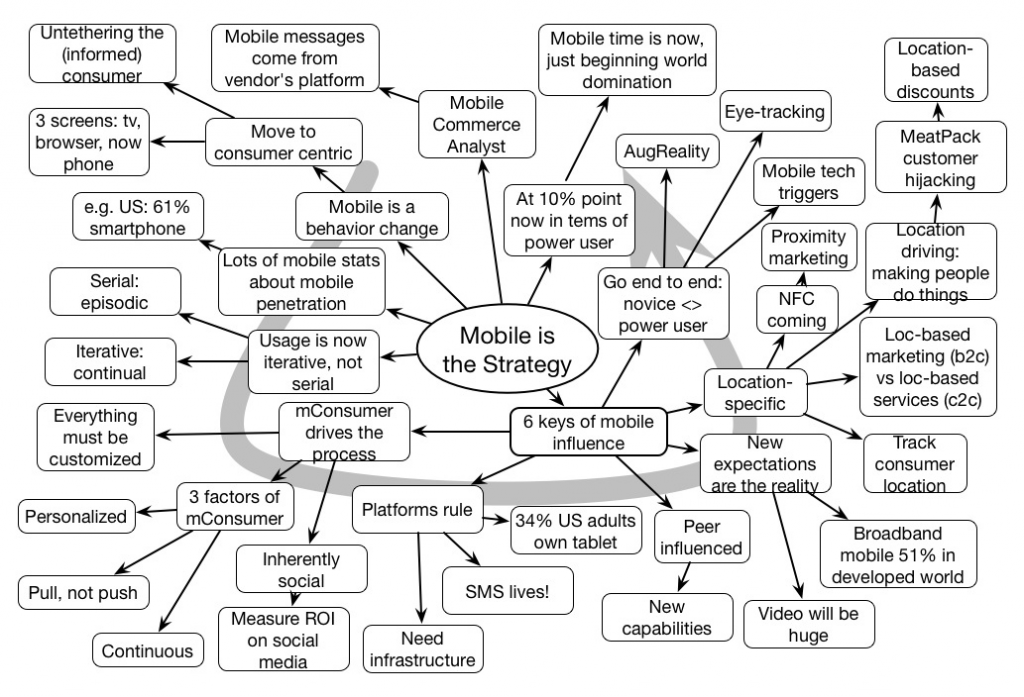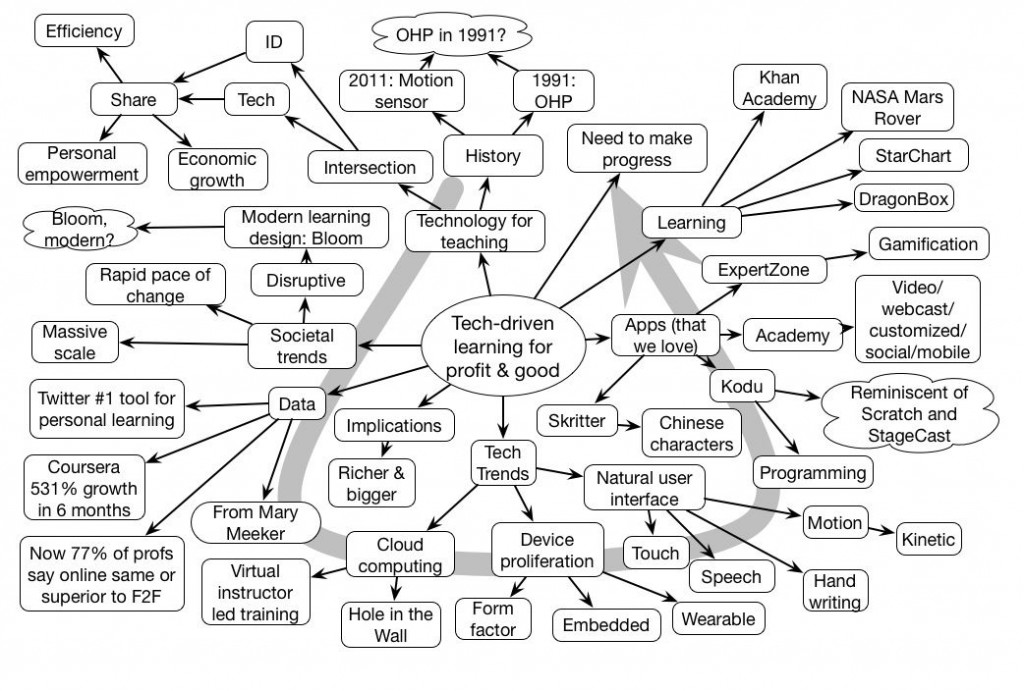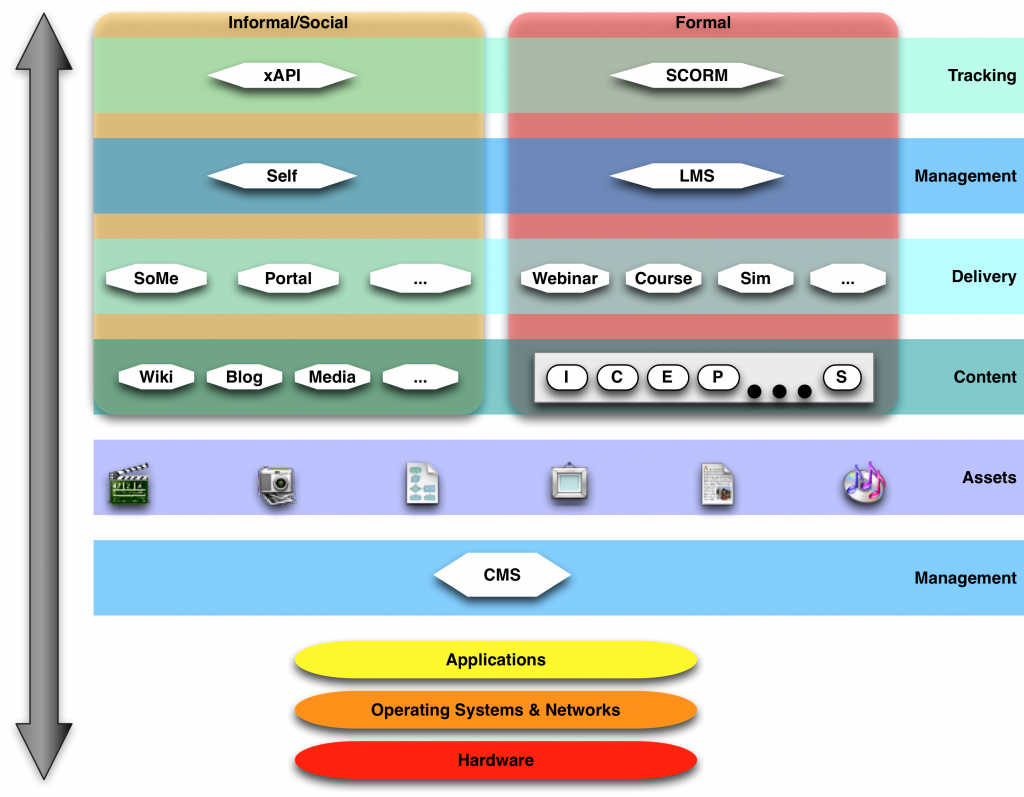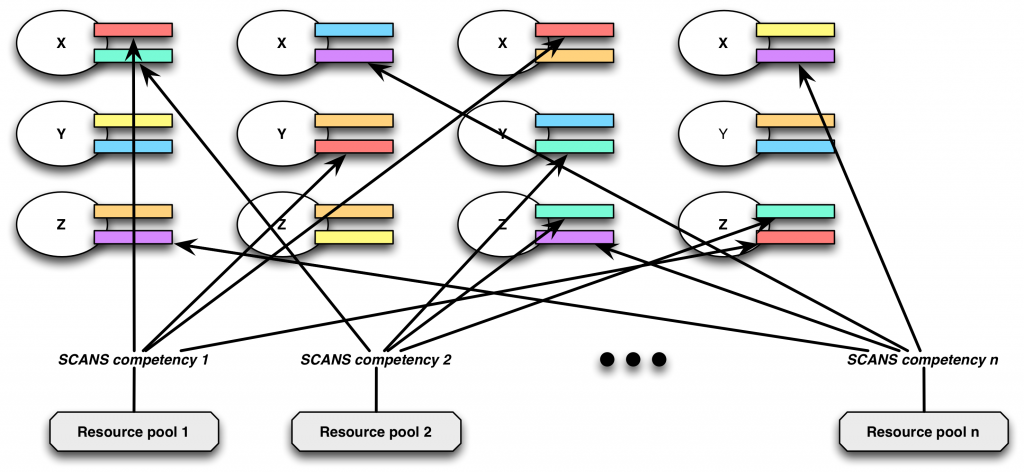At the recent Guild mLearnCon mobile learning event, I had a thought that seems to answer a long time debate. The debate centers on the definition of a mobile device. The feature/smart phone is obviously a candidate, and tablets seem pretty clearly included too, but the ongoing issue has been whether a laptop counts. And I may have finally discovered a way of looking at it that answers the question.
Eschewing the more abstract and academic definitions, the one that has most resonated with me has been Judy Brown’s. As I recall it, her characteristics are:
- small enough to fit in a pocket or purse,
- you’re familiar with it,
- instant on,
- and a battery that will last all day.
And this has been pretty good, because most laptops don’t fit the latter criteria, their batteries didn’t used to be able to go all day. However, this is a characteristic-based definition, e.g. about inherent properties of the device, and this can change. The new MacBook Airs, for instance, now have a battery that will last all day. And, even if the 13″ is too big, the 11″ or some other might soon fit the criteria. That is, we’re hitting a moving target.
What struck me the other day, however, was looking at it not from inherent properties of the devices, but from usage affordance, i.e. how one uses the device. Because it struck me: to me, it’s not really a mobile device unless you can use it with two hands, standing up or in motion. More importantly, it has to be a natural usage: holding up a netbook with one hand and hunt-and-peck with one hand doesn’t qualify. In short, if you can’t use it with two hands while moving, it’s not really mobile.
This strikes me as a way that will inherently allow new devices and new capabilities, yet still clearly distinguish what’s mobile and what’s not. So, for instance, devices with keyboard that turns around and becomes a tablet? A tablet’s mobile: hold with one hand, touch with the other. A two-handed keyboard is not. Will this fall apart? Probably, as the ultimate mobile test is whether it’s a device that goes with you everywhere: to the market, to a party, even to the bathroom. And some may be able to, but which ones really do? Regularly? If I had a small enough tablet, or iPod touch, probably, but the phone, yes! However, in some contexts, e.g. work, a tablet might go with me to all my work contexts, and then it qualifies if it meets the criteria: of being able to used naturally, standing up.
This, to me, seems to provide a better criteria, at least for now. What say you?





